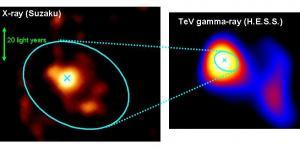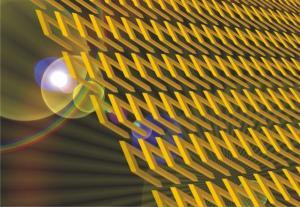By working in synergy with a ground-based telescope array, the joint Japanese Aerospace Exploration Agency (JAXA)/NASA Suzaku X-ray observatory is shedding new light on some of the most energetic objects in our galaxy, but objects that remain shrouded in mystery.
These cosmic powerhouses pour out vast amounts of energy, and they accelerate particles to almost the speed of light. But very little is known about these sources because they were discovered only recently. "Understanding these objects is one of the most intriguing problems in astrophysics," says Takayasu Anada of the Institute for Space and Astronautical Science in Kanagawa, Japan. Anada is lead author of a paper presented last week at a Suzaku science conference in San Diego, Calif.

|
| Suzaku resolved an X-ray source (left) that was also seen in gamma rays by the H.E.S.S. array (right). The object, HESS J1614-518, is accelerating protons to nearly the speed of light (Credit: JAXA/H.E.S.S.)
|

